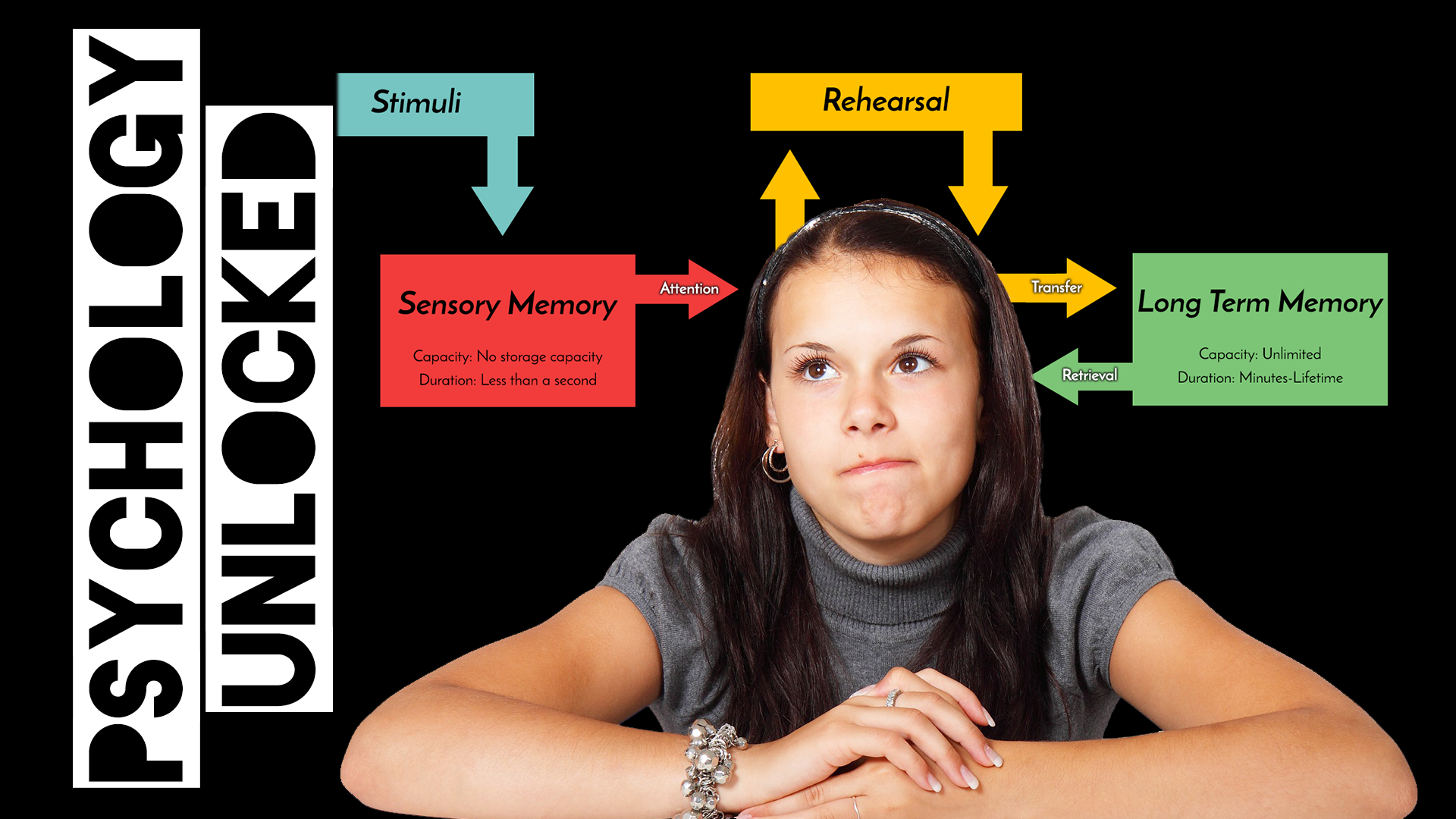
QUICK READ
Short Term Memory is a primary memory store that is responsible for dealing with whatever information we are dealing with in the here and now.
Capacity of Short Term Memory
Miller (1956) suggests that the capacity of Short Term Memory is 7 +/- 2 pieces of information at any one moment in time. It is possible to maximise the potential capacity of the store by ‘chunking’ information together – compounding pieces of information into a larger unit in order to keep more information active in Short Term Memory at any given moment.
Duration of Short Term Memory
Short Term Memory lasts for around 30 seconds to a minute. Any information not rehearsed in that time will be lost. However, rehearsal will keep a piece of information in Short Term Memory and sufficient rehearsal will transfer a piece of information into the Long Term Memory store for later retrieval.
Encoding of Short Term Memory
Short Term Memory is primarily an acoustic store, so information is coded in terms of sounds. It is therefore much easier to rehearse information that can be labelled with words, or has a particular sound, as this taps into the coding style of the store. Because of this, memory tasks using nonsense characters are much more difficult to complete than tasks using letters, words or numbers.
A Word on Working Memory
Working Memory is a development on the idea of a Primary Memory Store. This theory, proposed by Baddeley and Hitch (1974), responds to criticisms levered against Atkinson and Shiffrin’s concept of Short Term Memory by adding an understanding of nuances within primary memory.
DETAILED EXPLANATION
Introduction to Short Term Memory
Most of the information that enters your Short Term Memory is subsequently forgotten. Information is passed to Short Term Memory from Sensory Memory, and in order for it to be retained for later recall, the information must be rehearsed – facilitating the transfer of information from Short Term Memory to Long Term Memory. Lloyd et al. (1984) suggest that less than one-hundredth of all sensory information ever reaches conscious thought, and of that just one-twentieth is stored.
However, Short Term Memory is a lot more nuanced than simply a middle-man between Sensory and Long Term Memory and researchers have proposed various theories to account for the process of information through our memory system.
Atkinson & Shiffrin (1968) suggested a Two-Process Model, which focuses on the roles of attention and rehearsal in transferring information between the memory stores. A few years later, Baddeley & Hitch (1974) proposed the Working Memory Model, which delves into the internal cognitive structure of Short Term Memory.
Most analysis of Short Term Memory considers three dimensions: capacity, duration and coding.
Capacity of Short Term Memory
The capacity of Short Term Memory has been the topic of investigation since the late 19th Century – Ebbinghaus (1885) was one of the earliest psychologists to propose that Short Term Memory has a capacity of six to seven pieces of information. This hypothesis was famously supported by George Miller (1956) in his paper ‘The Magical Number Seven, plus or minus two’.
More recent research has suggested that the Magical Number may be closer to four (Cowan, 2010, Parker, 2012), but the point that Short Term Memory is limited to a notably small amount of information at any given moment in time remains unchallenged.

In order to increase the functional capacity of Short Term Memory, psychologists suggest that individuals ‘chunk’ information, thereby reducing larger numbers of data-points into a smaller number of chunks.

Take the example of a phone number: 03729735297. A random combination of 11 digits and on its own fairly challenging to remember. However, when we commit a phone number to memory we tend to break it down into chunks: 03729 – 735 – 297. When we recite the number we add a rhythm to it adding our ability to recall the number when required (more on encoding below).
The image on the right demonstrates the power of chunking familiar information. Give yourself 30 seconds or so to study the characters in the image and then try and recall the code after a 30 second break. It is much more difficult to remember unfamiliar information because chunking relies on our ability to draw pre-existing knowledge from Long Term Memory to aid our understanding and rehearsal of new information. It makes you appreciate quite how much an infant has to learn in its formative years. Compare your recall score for the nonsense characters with the phone number on the left.
Duration of Short Term Memory
The name Short Term Memory rather gives this one away… Primary Memory (as it is more properly termed) is a short term memory store. But how long is short term?
According to Atkinson & Shiffrin (1971) we can hold information in Short Term Memory for between 15 and 30 seconds unaided, and this can be extended with rehearsal. Atkinson and Shiffrin’s research suggests that the rehearsal process is an auditory process, by which an individual repeats information to him/herself to keep it circulating through the short term memory store, until it reaches a rehearsal threshold and is transferred to the Long Term Memory store (secondary memory) for later recall.
Weber & Castleman (1970) found that rehearsal can also be visual, but visual rehearsal is likely to be slower than acoustic rehearsal (keep reading for information on encoding).
Encoding of Short Term Memory
As hinted above, Short Term Memory is primarily an acoustic memory store. Information from Sensory Memory – including visual information – is converted into sound and stored in this form. This raises the interesting thought-experiment question of whether it is possible to think without words… But perhaps we’ll save that for another time!
Evidence for the primacy of acoustic coding in Short Term Memory has been provided by Conrad (1964) who found that errors participants made when trying to remember sequences of six consonants were similar in sound to the correct letter – b/d, p/v, m/n – despite the fact that the information had been provided visually. This supports the suggestion that visual information is converted into acoustic data in Short Term Memory.
Conrad & Hull (1964) add further support for the role of acoustic coding in Short Term Memory, noting that when participants were asked to recall letters (presented visually – ie. written down, not verbal), they made more errors when the letters sound similar (d, c, b, t, v, p) compared to letters which sound different (w, t, r, q, s, l), despite the fact that the letters were presented to the participants as shapes on a sheet of paper and not sounds.
